April 8 Solar Eclipse
On Sunday, my younger daughter and I drove down to Bowling Green, Ohio so we could view Monday’s solar eclipse. I was a bit nervous in the days leading up to this. The midwest isn’t known for clear, sunny skies, and the weather forecast kept shifting from partly cloudy to more cloudy and back.
When Monday afternoon finally arrived, the skies landed on partly cloudy. Fortunately, it was thin cloud cover, so we could still see the sun. The only noticeable effect was a haziness in some of the photos.
We settled down in a church parking lot, got everything out and ready, and waited. In addition to my camera, I’d purchased a Hestia telescope and solar filter that works with smart phones.
Click on any pic to see the full-size image.
The Hestia is impressive for what it can do with a smart phone camera. But ultimately — and not unexpectedly — the digital camera did a better job. I’m still happy to have both, and the Hestia has some other tricks for things like deep space photography that I’ll play with more in the future.
Hestia photo is on the left; digital camera shot on the right.
My daughter got a nice shot of me behind the cameras.
I stitched 24 shots into an animated gif of the eclipse, from start to totality. I’m pretty happy with how it turned out. The clouds created the variable hazy effect.
I’d seen partial solar eclipses a few times before, but this was my first time seeing totality. It was amazing. The sky got twilight-dark. A few stars were visible. We heard cheers from the stadium a few blocks away. My daughter kept whispering, “Oh wow…oh wow…”
This first shot shows how dark it was at 3:13 p.m.
Next we have totality with an emphasis on the solar flares prominences.
Here’s a close-up of those prominences, each of which is larger in size than the earth.
Adjusting the exposure loses the prominences but gives you a better view of the corona.
Finally, here’s a shot when the very first sliver of sun appeared at the end of totality.
The drive back was a bit of a nightmare. What was a just-under-two-hour drive down ended up taking between four and five hours on the return trip, not counting the time we stopped for dinner. We did end up behind a custom Ghostbusters car for about ten minutes though, so that was cool.
Despite traffic, the trip was totally and completely worth it. I’m so thankful that the weather mostly cooperated. Thanks also to my girlfriend, who reserved the hotel room a little while back as an early birthday present for me, and to my kid, for keeping me company. (My older daughter went with friends, but they also got to see totality.)
Five stars. Highly recommended.






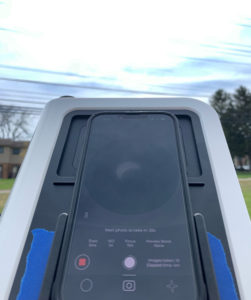
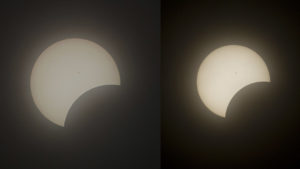
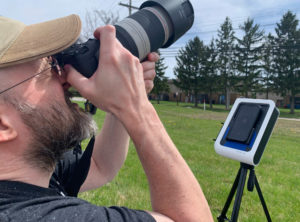
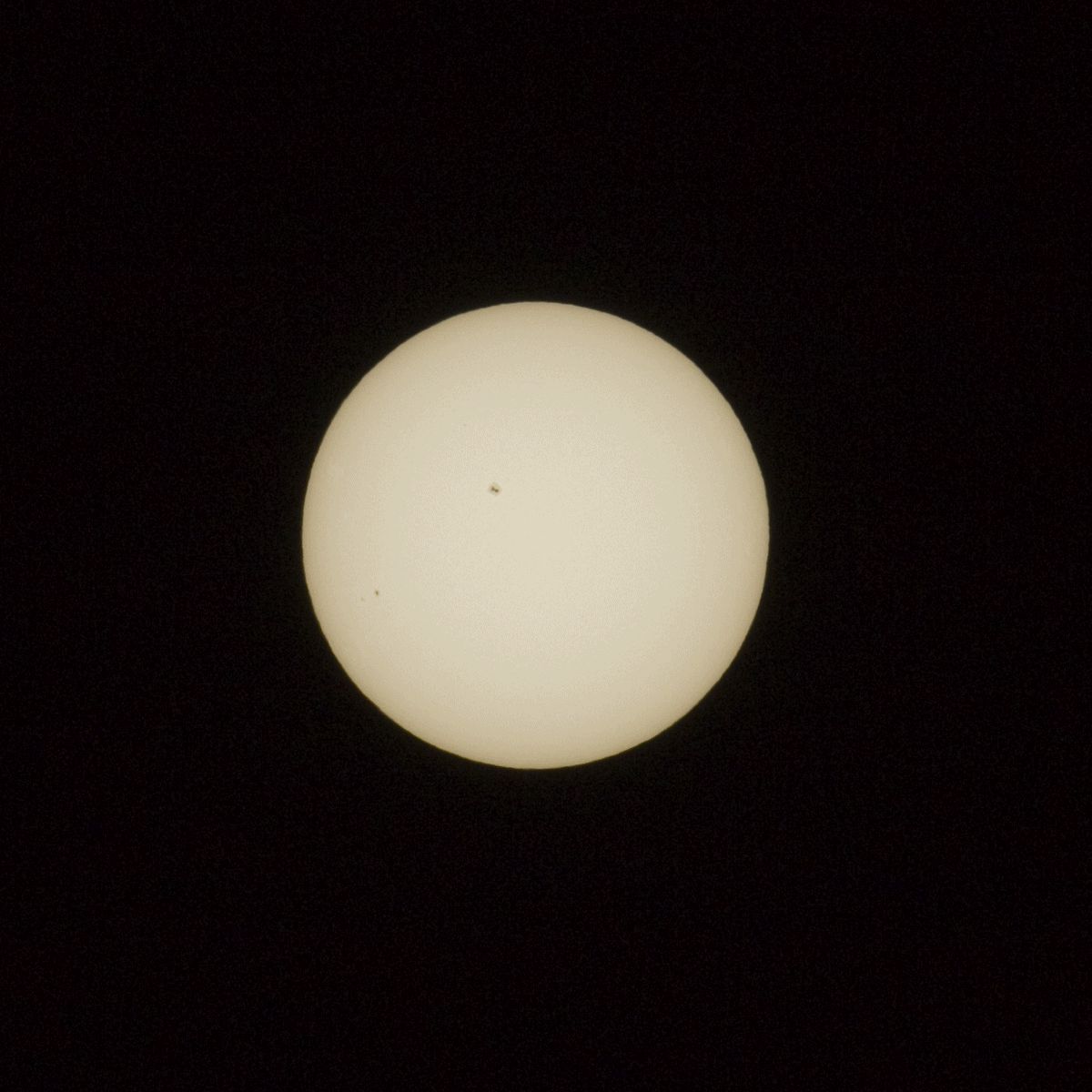
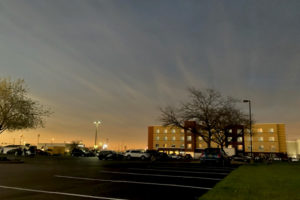
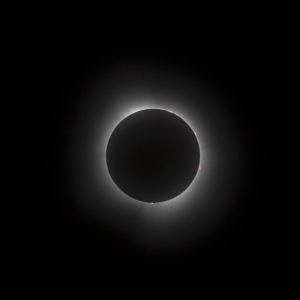
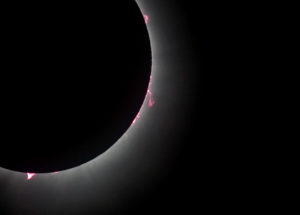
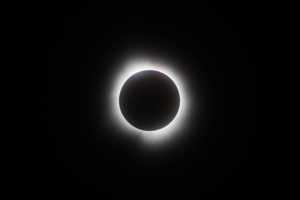
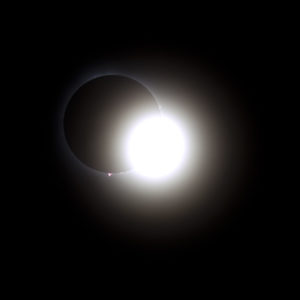
Alma Alexander
April 9, 2024 @ 12:19 pm
i am in awe and in pure envy…
Booji Boy
April 9, 2024 @ 3:22 pm
Glad you saw it! It’s really an amazing experience.
Jean Davis
April 9, 2024 @ 3:39 pm
Great photos!
Susie
April 11, 2024 @ 8:11 pm
Awesome Photos!
Can’t wait for your new books, Congratulations!
Skippy the Bush Kangaroo
April 12, 2024 @ 11:19 pm
Hi Jim! Long time fan. Long enough that my defunct Live Journal account sent me a reminder about your birthday today. I know there have been some hard times since the Live Journal days and I’m so glad to see you are doing well. Happy Birthday!
Jim C. Hines
April 13, 2024 @ 11:00 am
Thanks, Skippy! And wow…LoveJournal. I remember making LJ icons for some of my first books. I miss the community and connection of those days. Though I don’t miss some of the trolls and ugliness that popped up from time to time.